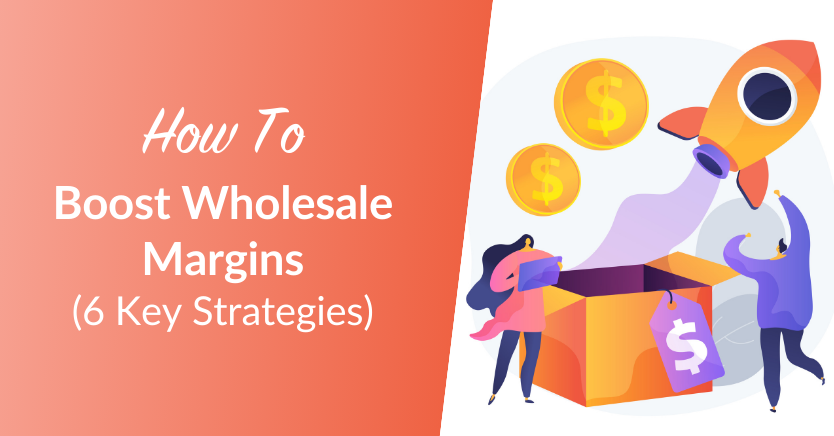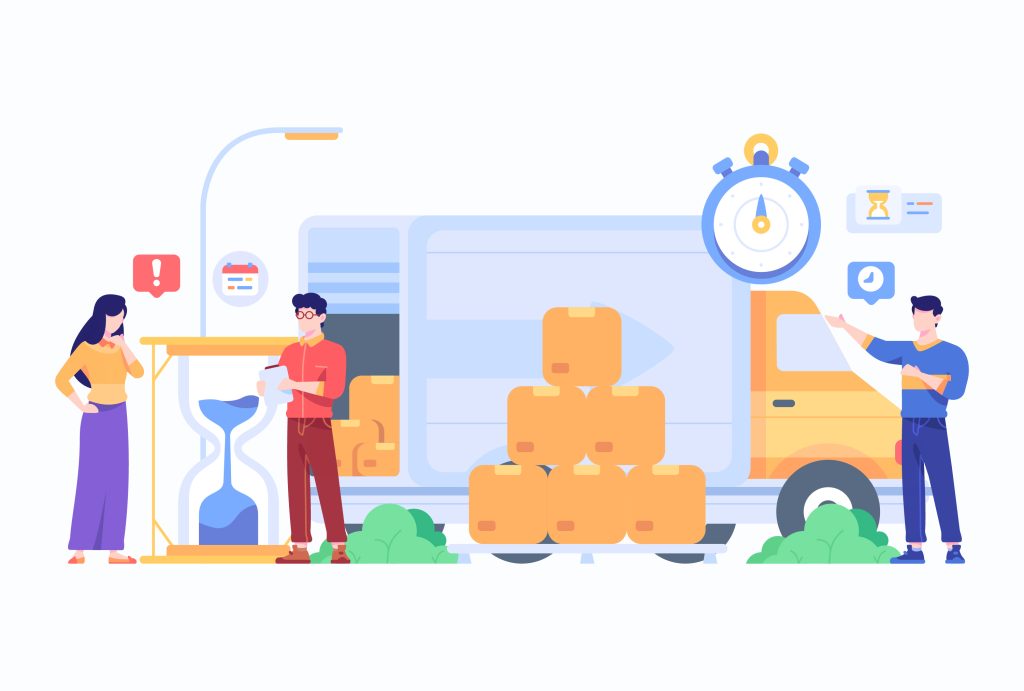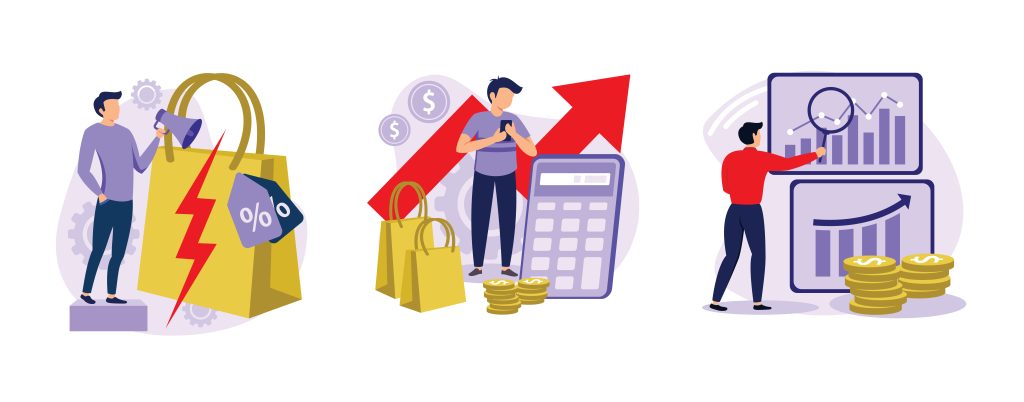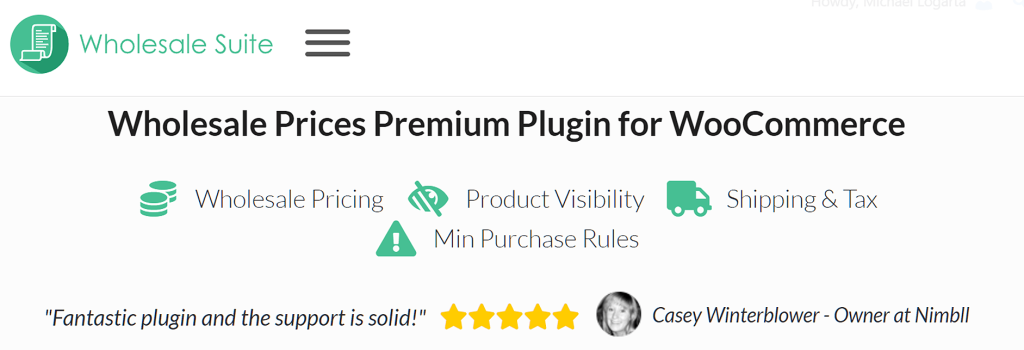
Understanding your wholesale margins is essential to building a sustainable wholesale business. This metric serves as a measurable indicator of your profitability. Therefore, learning how they impact your bottom line and discovering ways to increase them can be a game-changer for your business.
In this guide, we’ll explore what wholesale margins are and reveal actionable strategies you can use to boost your margins. As you gain more insights into this important aspect, you’ll be better equipped to make informed decisions to help your business thrive.
So let’s dive in!
Understanding Wholesale Margins
Wholesale margins refer to the difference between the cost of acquiring products and the wholesale price at which you sell them to your customers. Essentially, this figure defines your financial gains for each product sold.
Wholesale margins are expressed as a percentage and can be calculated using this simple formula:
Wholesale Margin (%) = ((Wholesale Selling Price – Cost Price) / Cost Price) * 100
Let’s illustrate this with an example.
Imagine you’re selling a product called “EcoBottle,” and you acquire it at a cost of $15. Now, let’s say you set the wholesale selling price of the “EcoBottle” at $25.
Using the formula:
Wholesale Margin (%) = (($25 – $15) / $15) * 100 = 66.67%
This means that for each “EcoBottle” you sell, you retain a wholesale margin of approximately 66.67%. In other words, for every $15 cost, you make a profit of around $10.
Understanding and calculating wholesale margins is fundamental to establishing a pricing strategy that covers your costs and ensures healthy profitability.
Calculating wholesale margins of bulk orders
As a wholesaler, chances are, your business doesn’t offer just one product. You likely have an array of different offerings, each with different acquisition costs and selling prices. So, to measure the overall health of your wholesale margin, you can sum the costs of all goods sold and compare them to the revenues generated using the same formula:
Gross Profit Margin (%) = ((Total Revenues – Total Cost of Goods Sold) / Total Revenues) * 100
Let’s consider a scenario where you’ve supplied retailers with a mix of products valued at $30,000. These products include pens, paper, chairs, and other essentials, each acquired at different costs and sold at varying prices. Assuming you’ve generated $50,000 in revenue from these sales, you can calculate your gross profit margin as follows:
Gross Profit Margin (%) = (($50,000 – $30,000) / $50,000) * 100 = 40%
This 40% gross profit margin illustrates the overall profitability across all the items you’ve sold to retailers. It signifies the balance between your costs and the revenue generated, an important metric for your business’s financial well-being. Furthermore, it provides key insights into the effectiveness of your pricing strategies.
What is the ideal wholesale margin?
The ideal wholesale margin should find the sweet spot between profitability and market competitiveness. While there are industry estimates, they can vary depending on several factors, including the nature of the product and the competitive landscape.
For example, businesses in the apparel industry typically aim for a 30-50% wholesale profit margin. However, some industries operate on slimmer margins due to varying cost structures or product types. Yet, they might compensate with higher average order values to boost overall revenue.
As such, the ideal profit margin for your business would depend on your unique growth objectives and market positioning. Striking this balance will require strategic evaluation and continuous adjustments.
6 Strategies To Increase Your Wholesale Margins
In this section, we’ll explore actionable strategies that can help you enhance your wholesale margins. When applied alongside an understanding of your unique business landscape, these strategies can open opportunities for maximizing your profitability.
1. Find ways to streamline your operations
While It may seem counterintuitive to focus on your operations before modifying your pricing strategies, this process can help you lay the foundation for improved profitability. This step entails identifying and eliminating unnecessary steps, redundancies, and bottlenecks in your current operations. By doing so, you can reduce costs, save time, and increase the efficiency of your operations.

Consider adopting the lean approach– a powerful tool for operational efficiency. This methodology encourages a thorough review of your workflows to identify areas for automation, simplification, or removal. Below, we’ve summarized some ideas to help you streamline your operations:
- Invest in technology to automate or simplify your operations
- Automate routine tasks to free up time for high-value activities
- Standardize processes to enhance consistency
- Cross-train employees to ensure flexibility even during absences
- Regularly review and modify procedures to stay aligned with your business’s growth
2. Boost wholesale margins by optimizing inventory management
Effective inventory management ensures the right products are available at the right time. Aside from preventing stockouts, this can help avoid excess inventory costs that chip away at your bottom line.
This strategy delivers a twofold advantage: First, it minimizes the need for product markdowns, allowing you to set profitable prices throughout the product’s lifecycle. Therefore, you won’t need to decrease your prices to move stagnant inventory.
Secondly, it enables you to identify low-performing, high-cost, or wasteful products from your offerings. This knowledge can help you make informed decisions around purchasing so you can channel your efforts on profitable products.

To optimize your inventory, consider investing in technologies that improve inventory visibility. Modern software allows real-time inventory tracking to help you analyze demand patterns and stock levels. With these insights, you can make smart purchasing decisions aligning with customer demand and market trends.
3. Increase Average Order Value (AOV)
Encouraging customers to add more items to their carts can boost your immediate sales and maximize your revenue per bulk transaction. Offering exclusive bundled deals is one effective way to do this.
Additionally, you can implement cross-selling or upselling techniques in your promotion strategy. For example, if your wholesale customer is buying office chairs, you can suggest ergonomic desk accessories to go with their purchase.
Furthermore, aim to optimize your website’s layout, displaying related products and showcasing positive reviews and testimonials to encourage buyers.

Another powerful way to increase your AOV is by offering strategic discounts. For instance, you can set minimum order quantity thresholds that qualify customers for additional discounts. This incentivizes customers to buy more to unlock better prices, increasing their order value.
You can easily implement this strategy in your WooCommerce wholesale store with the help of Wholesale Prices Premium. This powerful plugin allows you to effortlessly create tiered pricing structures that reward customers for purchasing more items. With Wholesale Prices Premium, you can offer volume-based discounts, category-level pricing, and other advanced pricing options.

4. Boost your brand’s perceived value
Your customer’s perception of your brand directly influences their willingness to pay for a premium. By enhancing your brand’s perceived value, you can set higher prices and enjoy increased profit margins. There are several ways you can accomplish this for your wholesale business.
For one, you can provide value-added benefits to your wholesale products. Consider extending warranties, offering personalized service, or bundling complementary products to enhance the customer experience.

Likewise, you can leverage the power of social proof. According to industry research, positive customer reviews increase customer trust in a brand. By showcasing positive customer reviews and testimonials on your website and marketing materials, you improve your brand’s credibility.
5. Improve customer retention
According to industry research, increasing your customer retention rates by 5% can increase your profits by 25-95%. This insight highlights the importance of nurturing loyal customers in helping your business increase wholesale profit margins.
To nurture existing customer relationships, consider providing personalized experiences. For example, you can implement loyalty programs to reward frequent purchasers. Providing discounts, exclusive offers, or points accumulation encourages customers to remain loyal to your business.
Powerful plugins like WooCommerce Loyalty Program allow you to create a loyalty program for your e-commerce store seamlessly. These plugins help keep your customers engaged and coming back for more.

6. Improve purchasing practices
Improving your procurement practices can significantly impact your wholesale profit margins. This step entails evaluating your supplier relationships and acquisition processes to reduce costs.
For example, you can try negotiating better deals with your suppliers. By initiating conversations about better deals, you can work toward pricing structures that align with your financial objectives. Negotiating for bulk discounts, more favorable credit terms, or reduced prices can contribute to reducing your overall acquisition costs.
With reduced acquisition costs, you enjoy increased margins for each product sold.
Conclusion
Understanding and maximizing your wholesale margins is critical for long-term sustainability and success. In this article, we’ve highlighted key strategies to help you improve your wholesale margin and drive better profitability.
To recap, here are the strategies we’ve covered:
- Streamline your operations
- Optimize inventory management
- Increase average order value
- Enhance your brand’s perceived value
- Improve customer retention
- Improve purchasing practices
Integrating these strategies into your business model can help set your business up for long-term success.
Which strategies do you find the most helpful to apply to your wholesale business? Share your thoughts and questions in the comments below!




